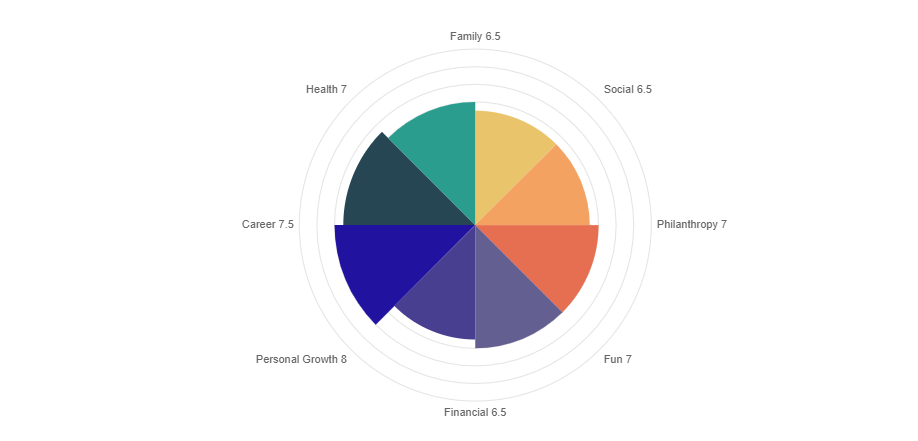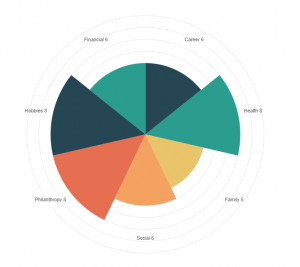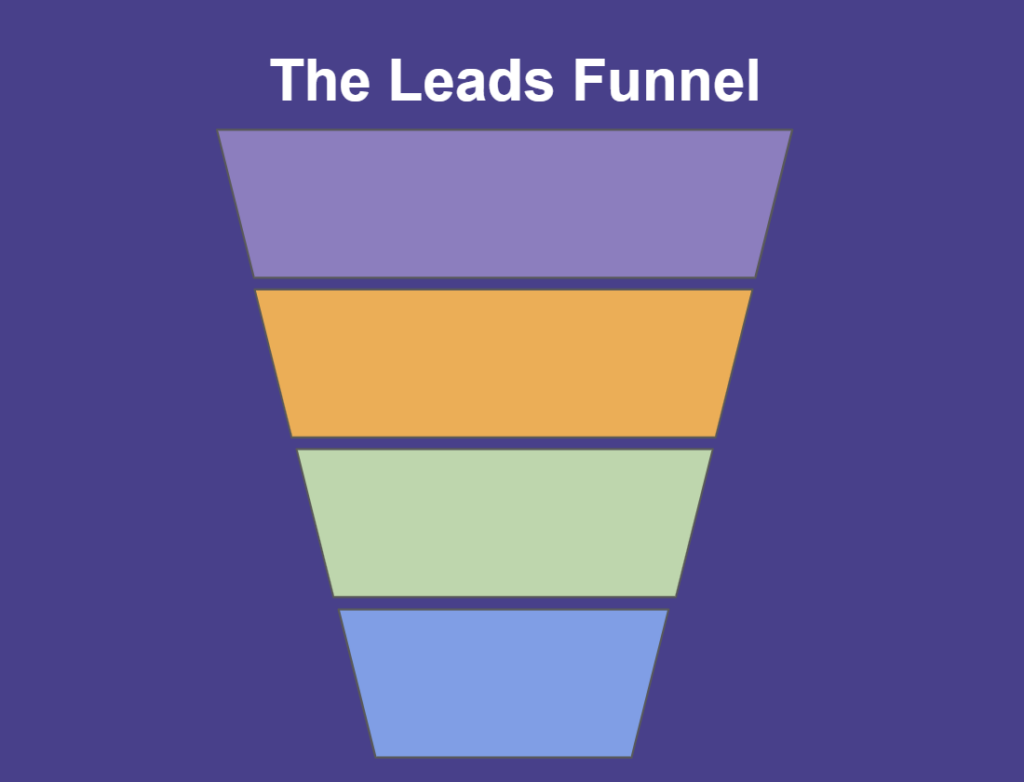


A Wheel of Life assessment is a simple yet powerful life coaching tool used by coaches. It provides a very effective diagnostic of how clients are balancing different facets of their life. It is also very versatile. In this guide, we will show you how a Wheel can be used in any area of life and business.
There are many wonderful paper templates available online that you can print and use. For example, the Coaching Tools Company provides excellent resources for the Wheel of life, as well as many other templates and tips. Here’s another nice post on mindtools.com
Evalinator helps you go digital and makes interactivity possible. We describe how to create your own custom wheel of life online here. An interactive coaching Wheel on Evalinator has features such as before-after analysis, instant results, goal setting, and so on. It also helps you build your email list.
In this guide, we will cover the following topics:
 A Wheel of Life is a powerful coaching tool to diagnose and balance the most important facets of life.
A Wheel of Life is a powerful coaching tool to diagnose and balance the most important facets of life.
Coaches know that sometimes a problem being faced may have its roots in a completely different place – somewhere you may not look, or may not even want to look. For example, workplace issues may be related to what’s happening with one’s satisfaction in other walks of life such as social or family.
By digging deeper into these different facets using a Wheel of Life, you (and your coach) can identify and address the real reasons that are causing an imbalance. Then the coach can work with you to resolve those imbalances.
A Wheel of Life can also be fashioned for multiple areas. All you need are 6-10 measurable dimensions that can be controlled.
For example:
A Wheel is a very versatile tool. For some ready made interactive templates, see this blog which includes customizable wheels for health, business, life and spirituality.
A Wheel of Life has multiple dimensions. Generally there are 8-10 categories. They cover both personal and professional aspects of life. At the end of the exercise an individual clearly sees the areas of prioritization, and can decide how to make a change supported by their coach.
Coaches of different specialties can use a Wheel in different ways are:
All you need are a set of questions that holistically cover the life area that you help with.
Try these example Wheels to experience how they work:
You can use a paper template and distribute it. There are many templates available online. The Coaching Tools Company offers the wheel and many other wonderful assets.
If you want digital interactivity, you can create a digital Wheel of Life in just a few minutes with Evalinator.
Once you have your assessment ready (it doesn’t take too long at all), both existing clients and prospects can take your assessment and track the goals & results from your coaching over time.
The life assessment Wheel is a great tool for ongoing engagement over multiple coaching sessions.
If you have an online wheel using Evalinator, you can also use it to increase the number of visitors who find and engage with you online. As you build your email address list, you can then follow up with clients and prospects in a personalized way.
The common categories used in Wheel of Life are as follows:
 In each of these categories the individual would rate their satisfaction or happiness on a scale of 1-10. At the end of the exercise, the Wheel of Life would show them where some of the imbalances could be. They can also explore if there are any interactions between two categories.
In each of these categories the individual would rate their satisfaction or happiness on a scale of 1-10. At the end of the exercise, the Wheel of Life would show them where some of the imbalances could be. They can also explore if there are any interactions between two categories.
For example, if an individual feels they are struck in their career and are slowly falling behind, they might rate themselves a 3. And if they are satisfied, then they might rate themselves a 10. A low rank in family (feeling of being loved and supported) may also appear together with a decrease in the rating on career or health. A coach can then help pinpoint if the two facets are independent, or related and then help clients set goals to get to where they need to be. The target state is up to the individual of course, and the goals can be both short and long term.
A Wheel of Life is a deceptively simple tool. If as a coach can ask probing questions to help your clients put a little thought into the questions, then it is a fantastic and structured way to take some focused action. It can help you improve your clients’ state of overall well-being.
 Assessing the balance using a Wheel of Life does need some preparation. Here are 2 tips to make sure that the assessments by clients are accurate.
Assessing the balance using a Wheel of Life does need some preparation. Here are 2 tips to make sure that the assessments by clients are accurate.
Often when people rate themselves, they tend to think in terms of “how much” they have. Instead remind them that it’s about how satisfied they are. For example, they may not be the CEO of their company, but if they are happy with what they do and the time they spend, then that’s how they should rate themselves.
It is also tempting to rate for desire which can be a folly. It is human nature to want more. Instead, remind clients that while rating themselves for happiness, it’s important to rate as per their current state happiness. And that you will help them solve for desire later. For example, if earning more means having to travel a lot, but they are happy not traveling then that’s how their current happiness is to be rated. The tradeoffs and sacrifices of more money is to be discussed as a goal and together with other aspects, not independently. Otherwise the assessment of balance in their lives will be skewed.
Often people derive co-relations that affects their ratings. Remind your clients to rate each facet independently in terms of satisfaction. Just because they are too busy at work to spend more time with family, doesn’t mean they rate their “career” facet as unhappy.
The actions to achieve balance will come later. Don’t let them jump to conclusions.
As a coach, the questions to ask are often the best help you can give.
For example, you can ask if:
It is expected that the right questions may alter their current assessment of balance. That is perfectly fine. Its important that the baseline for coaching is well grounded in reality.
Goals are what you brainstorm with your clients to get them to make a change. A meaningful goal is based on self-introspection and prioritization. It’s not just to increase their score but to increase their overall happiness and sense of control. A goal should also be easily measurable and achievable.
Examples of goals under a Wheel of Life (as against a Wheel of Business) could be to begin taking the kids to the park every weekend, or begin to have dinner alone with their spouse once every week, or begin to dress more formally at their job, or open each work meeting with a confident “How’s everyone doing today”? These are not suggestions of course, just examples of what a measurable and achievable goal looks like.
You could consider these examples as activities towards achieving a goal. That’s fine too. Just keep your definitions consistent.
For a coach, it is important to “be there”. And nothing says that better than following up periodically or even sending words of encouragement by email. A check-in should not feel like pressure, but it’s just meant to ask if your client is comfortable meeting their goals, if they would like to report something, and if you can help them in anyway. If you are using a digital wheel of life on Evalinator, this periodic check in very easy to do. Clients can report their progress online and you can guide them remotely without having to send emails and risk missing something.
The paper based Wheel of Life is an excellent tool. But it does present some challenges in today’s digital world. Let’s see what they are.
Most coaches would use a PDF template today. There are excellent templates available for download on the internet. So a coach can provide a template to their client to print, and then they begin the discussion and exploration. This process definitely gets the job done.
When coaches put a PDF Wheel of Life online for download in return for an email address, we call such a PDF a “lead magnet”. The coach now has the email address of a prospective client. They can follow up and set up a discovery call to see if they would be a right fit.
However, an email address captured like this does not provide any additional information or context to the coach. So your follow-up would not be personalized at all. Even when using a download such as an eBook or a checklist, there is nothing to keep the prospective clients engaged with you. The coaches have no way to keep in touch in a personalized manner except send out periodic newsletters or emails that are not specific to the recipient.
By using static PDF downloads, it is difficult to build trust with prospects so they are ready to sign up when they are ready.
A PDF template of a Wheel of Life also does not help with engagement outside of the office. People need goals and constant motivation. So coaches are always trying to follow up, but have no way of knowing what progress is being made until the next session. Engagement and retention suffers if the client does not see adequate progress. Coaches are always catching up.
A digital Wheel of Life has several benefits. It allows you to:
By using either a paper or a digital wheel, you can personalize each interaction instead of bulk mailing your entire list the same thing.
It is well proven that when clients are ready to buy, they would rather buy from someone they already trust and have a comfortable relationship with.
That’s exactly how a Wheel helps.
Whether you use just a printed form, or an online Wheel, you and your clients can actually use it as a tool that promotes introspection and accountability. And as you build context and engage in a manner that yields the desired benefits to your clients, they become more likely to stay engaged.
That brings us to better overall personalization. A wheel helps you personalize your outreach and check-ins so you are always acting with full context. Based on the scores, you can either handcraft your personal messages, or use an email automation tool to generate tailored messages. The summary information from a Digital Wheel can go into the system that you are using. That way you are helpful and letting the clients take their own time to decide when they are ready.
Clients must be willing, receptive, and introspective. They should be ready to take action themselves. And if you add a wheel to your toolkit, you can supplement and reinforce your wonderful techniques.
Try these example Wheels:
If you want to go digital, you can create a digital Wheel of Life with Evalinator to use with clients. Once created, it can be used with all your clients. Only you and each individual client have access to the scores and the goals you help them set. In addition, you can adjust or change the categories as you like, and also adjust the colors of the Wheel to match your brand.
You can embed it on your own website if you have one so that your clients have a seamless experience. For those coaches who offer a complimentary discovery session, the online Wheel of Life is a very effective way for prospective clients to start a relationship with you and build trust.
See a quick 1-minute explainer below.
Whether you are using a paper wheel of life or a digital one, we hope these best practices help you help your clients.
Don’t consider a digital Wheel of Life as just a powerful lead magnet. It also helps you engage your clients and build a long lasting relationship. It becomes a goal setting and accountability tool.
You can customize it completely when you create your own Wheel of Life on Evalinator – the dimensions, your style, the colors other things. You can also host your Wheel of Life on your own website. And you can begin to capture email addresses in your own marketing database too.
If you think it is right for you, then create a digital / online Wheel of Life today and start engaging your prospects and clients.
Whether you do this on paper or digitally, it’s a great way to build trust and confidence.
Start with a risk free 21 day free trial. We know you’ll love it!
Launch Your Digital Wheel of Life in 30 Minutes

Feeling frustrated with lead generation?
Take this free, 5-minute quiz and get more prospects into your leads funnel.
Instant Results. Actionable recommendations. Email required.
Find Your Score >>